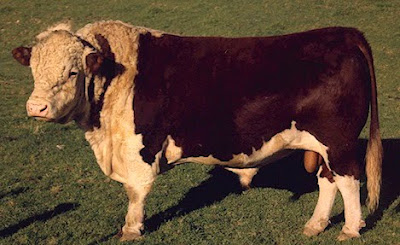
Pure sahiwal cow for sale 2012
Rs 200,000
- Location: Multan, Punjab, Pakistan
- Street Address: multan






I want to sell my pure sahiwal cow. Purchased from jagirabad farm khacha khu. Date of birth is 2005. Given birth 2nd time.
Cattle farm husbandry: Beef cattle breeds in New Zealand
Early history
Cattle were brought to New Zealand in the early 1800s by the first European settlers, to provide milk, draught power, meat, horn and hides. They also played in important role in breaking down bush and scrub during pasture development.
The Durham Shorthorn and the Red Devon were the first breeds to be used as the steers made ideal oxen, but as the population increased and farming developed, other specialised beef and dairy breeds were imported.
New Zealand was alert to the scourge of Foot & Mouth disease, so only imported cattle from countries where the disease was not endemic such as Britain. Beef cattle numbers were slow to develop till the invention of refrigeration in 1880, afte which time frozen and chilled beef became important exports. However it was not until the 1950s with the expansion of the American hamburger meat trade that beef production in New Zealand really expanded, and most of this meat came as a byproduct from the dairy industry.
In the early days of New Zealand’s beef industry, Aberdeen Angus and Hereford cattle from Britain were numerically the most popular until the 1970s, when over 20 “exotic’ breeds arrived, mainly from Europe, primarily to cross on to the Friesian and Jersey dairy breeds.
However, because of their scarcity, they were established as studs and exported from New Zealand to other countries because of our clean animal health status. You could say that today, most of these exotic breeds have been and gone, with only a few purebred stud herds left, and the New Zealand beef industry is based mainly on the crossbred Hereford x Friesian cow or the straight Holstein Friesian for bull beef.
Performance recording
Performance recording of beef cattle in New Zealand was started in 1963 and became Beefplan in 1973. At present there are a number of alternative recording schemes breeders can use, but they all use the same basic software to produce a range of Estimated Breeding Values (EBVs) which breeders use to select their stock.
New Zealand Angus
NZ Angus cows and calves
HistoryOriginated as the native breed in the East of Scotland in the 18th Century and imported into the South Island of New Zealand as the Aberdeen Angus in 1863. In 1891 it was introduced to the North Island and hase been widely used ever since as a breeding cow on all types of country. The New Zealand Aberdeen Angus Cattle Breeders’ Association was formed in 1918 and in 1970 became the NZ Angus Association Inc. to run the breed’s affairs.
Features
- Colour – all black. Some small white areas around the navel is allowed.
- Polled
- Medium size; good early growth rate; early maturing.
- Good maternal ability; low calving trouble.
- Adapted to a wide range of conditions; good forager on hill country; hardy.
- Used as a straightbred beef dam and as a crossing sire on dairy breeds.
Beef Shorthorn
Beef shorthorn steer
HistoryBred in Northern England in the last 1700s by the Colling brothers who produced both beef and dairy strains. The Scottish Beef Shorthorn developed in the early 1800s. Samuel Marsden brought the first Shorthorns to New Zealand in early 1814, and the first herd book of the NZ Beef Shorthorn Cattle Breeders’ Association appeared in 1884. The breed made a major contribution to New Zealand’s early land development. The breed’s affairs are now run by the NZ Beef Shorthorn Association Inc.
Features
- Colour – red, roan (mixture of red & white) or white.
- Polled with some horned.
- Medium size; good early growth rate; early maturity.
- Good maternal breed; good temperament; low calving difficulty.
- Adapted to wide range of conditions; good forager.
- Used as straightbred beef dam or as a crossing sire.
Galloway & Belted Galloway
Belted Galloway cow
HistoryThese breeds developed in the West of Scotland in the 17th Century and are of very ancient origin. They were imported into New Zealand in 1947 and are registered in separate sections of the Galloway Herd Book. The breed’s affairs are now run by the Galloway Cattle Society of NZ Inc.
Features
- Colour –Galloways are black, and the Belted Galloway is black with white band around middle. Both breeds can show dun or silver dun, or white coat colours as recessives.
- Both breeds polled.
- Extremely hardy breeds.
- Long outer coats and thick undercoats.
- Medium sized.
- Slow maturing, but show good early growth when well fed.
- Lean carcasses that yield well.
- Used as straightbred beef dams and as crossing sires.
White Galloway cow and calf
Hereford
 Thursday 9 February 2012
Thursday 9 February 2012









